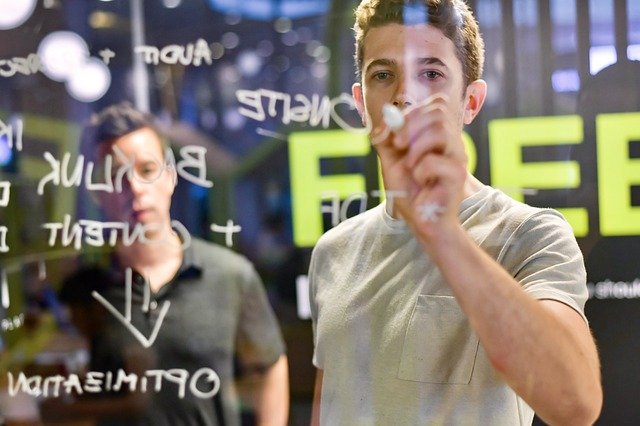Importance of Brand Loyalty
Brand loyalty plays a crucial role in the long-term success of any business. As you consider your marketing strategy, understanding the impact of brand loyalty on revenue growth and customer retention is essential.
Impact on Revenue Growth
Implementing effective brand loyalty incentives can significantly boost your revenue. Research from Accenture indicates that loyalty program members drive between 12% and 18% revenue growth each year (LoyaltyLion). This growth can be attributed to both increased purchases and the tendency of loyal customers to spend more compared to new customers.
| Revenue Growth Through Loyalty Programs | Percentage Contribution |
|---|---|
| Loyalty Program Members | 12% – 18% |
Furthermore, studies suggest that loyal customers increase their average spending by 67% compared to new customers, demonstrating the financial benefits associated with cultivating brand loyalty (LoyaltyLion).
Relationship with Customer Retention
Customer retention is intrinsically linked to brand loyalty. A solid loyalty program not only encourages repeat purchases but also fosters a sense of connection to your brand. According to Bain & Company, improving customer retention by just 5% can lead to an increase in profits of up to 95% (LoyaltyLion). This highlights the significant returns you can expect from loyal consumers.
Moreover, approximately 75% of customers are willing to switch brands for a better loyalty program (LoyaltyLion). Establishing appealing loyalty incentives can prevent switching and enhance customer loyalty.
| Customer Retention Impact on Profitability | Potential Increase in Profits |
|---|---|
| 5% Improvement | Up to 95% |
Understanding these factors is vital for the success of your brand loyalty programs. By focusing on loyalty incentives, you can improve both revenue and retention, ultimately driving growth and stability in your business.
Successful Loyalty Program Examples
Incorporating effective loyalty programs can significantly enhance your brand loyalty incentives. Several leading companies have successfully implemented loyalty programs that foster customer retention and improve revenue. Here are some exemplary programs that you can draw inspiration from:
Sephora’s “Beauty Insider” Program
Sephora’s “Beauty Insider” loyalty program stands out as an influential example in the beauty industry. This points-based incentive structure allows customers to earn rewards for their purchases, while also providing trial-sized products and unique experiences. The program emphasizes community engagement, allowing members to share their experiences and reviews. This not only increases customer interaction but also strengthens brand loyalty.
| Features | Description |
|---|---|
| Points-Based Rewards | Customers earn points for purchases, redeemable for products. |
| Trial-Sized Products | Members receive exclusive access to trial sizes of new products. |
| Unique Experiences | Offers exclusive events and experiences for top-tier members. |
LEGO Insiders Program
LEGO’s loyalty program, known as LEGO Insiders, is another effective model. This program rewards customers for both purchases and registering new LEGO sets. By fostering engagement through creative activities and exclusive offers, LEGO successfully increases purchase frequency. The value-based loyalty program effectively creates a community that encourages brand attachment.
| Features | Description |
|---|---|
| Purchase Rewards | Earn points for every purchase made. |
| Registration Credits | Extra rewards for registering new LEGO sets. |
| Community Engagement | Exclusive activities and challenges for members. |
Astrid & Miyu’s “Astrid & You” Program
Astrid & Miyu’s “Astrid & You” program employs a tiered loyalty structure that caters to luxury consumers. This program offers early access to sales, exclusive promotions, and discounts for loyal customers, creating a sense of exclusivity. By rewarding high-value customers and providing personalized experiences, this approach effectively fosters brand loyalty for premium products.
| Features | Description |
|---|---|
| Tiered Rewards | Members receive increasing benefits at different loyalty levels. |
| Early Access | Exclusive early access to new collections and sales. |
| Personalized Promotions | Tailored discounts based on customer preferences. |
Amazon Prime Membership
Amazon Prime is a staple example of a successful subscription-based loyalty program. For an annual fee, members enjoy unlimited fast delivery, exclusive access to streaming services, and various member-only promotions. The significant financial impact is evident, as Amazon Prime members reportedly spend an average of $1,500 annually, compared to $625 spent by non-Prime customers. This disparity highlights the effectiveness of a well-structured loyalty program.
| Features | Description |
|---|---|
| Unlimited Fast Delivery | Members receive free shipping on eligible items. |
| Exclusive Streaming | Access to movies, music, and original content. |
| Significant Savings | Regular deals and discounts for members. |
By closely examining these successful loyalty programs, you can gather valuable insights and techniques to enhance your own brand loyalty incentives. Consider implementing similar strategies to foster customer loyalty and elevate your business’s success. For more information on building effective programs, explore our resources on brand loyalty programs and customer loyalty management.
Benefits of Customer Loyalty Programs
Loyalty programs can provide significant advantages for brands looking to develop deeper connections with their consumers. Here are some essential benefits of these programs that you should consider.
Revenue Boost and Customer Retention
Implementing a loyalty program can lead to a substantial increase in revenue. Research from Accenture indicates that loyalty program members contribute to between 12% and 18% growth in revenue annually (LoyaltyLion). This can be attributed to the fact that these programs incentivize consumers to remain loyal to your brand while encouraging them to make repeat purchases to accumulate rewards.
Moreover, customer loyalty programs significantly enhance customer retention rates. A study by Bain & Company found that improving customer retention by just 5% can lead to an increase in profits of up to 95%. By maintaining existing customers through rewards and incentives, you can foster long-term relationships that ultimately yield higher profitability.
| Effect on Revenue | Percentage Increase |
|---|---|
| Revenue Growth from Loyalty Program Members | 12 – 18% |
| Profit Increase from Customer Retention | Up to 95% |
Customer Appreciation and Personalization
Loyalty programs enable brands to demonstrate appreciation for their consumers by providing tailored rewards and offers. Personalized experiences foster a sense of belonging and recognition, which can increase emotional engagement with your brand. Engaging consumers through appreciation not only solidifies their loyalty but also enhances their overall experiences with your products and services.
Using data collected from loyalty programs, businesses can also personalize marketing campaigns, developing targeted promotions based on customer purchasing habits, thereby increasing their relevance and effectiveness.
Competitive Differentiation
In today’s competitive market, standing out is crucial for success. Loyalty programs can serve as a distinctive element that differentiates your brand from competitors. By offering exclusive rewards and incentives, you provide consumers with additional reasons to engage with your brand.
Approximately 75% of customers are willing to switch brands for a superior loyalty program (LoyaltyLion). By creating a compelling and unique loyalty program, you can enhance your brand’s attractiveness and increase its perceived value, influencing customers’ purchasing decisions.
Loyalty programs are not just beneficial for customer retention but play a vital role in driving revenue, enhancing customer appreciation, and differentiating your brand from others in the market. To learn more about effective strategies for building and managing customer loyalty, consider exploring customer loyalty strategies and brand loyalty programs.
The Psychological Aspect of Brand Loyalty
Understanding the psychological aspects of brand loyalty is essential for developing effective brand loyalty incentives. By tapping into the emotional and cognitive factors that drive loyalty, you can create more meaningful connections with your customers.
Associating Positive Feelings with Brands
Brand loyalty often stems from customers associating positive feelings with a brand. This phenomenon occurs when customers experience consistent satisfaction with the products or services a brand offers, which builds trust and familiarity. As noted by Antavo, loyal customers are inclined to continue purchasing from the same brand, regardless of the competitive landscape.
Creating and nurturing positive associations involves understanding customers’ perceptions of your brand and ensuring that your actions align with those perceptions. Brands that promote values such as sustainability or community involvement can create deeper connections, leading to enhanced customer loyalty. Furthermore, when customers perceive loyalty programs as valuable, they are more likely to engage with them. This perception of social validation—seeing others benefit—supports their emotional connection to the brand (2Stallions).
Emotional Decision-Making in Loyalty
Emotions play a crucial role in decision-making, particularly in the context of brand loyalty. Research indicates that loyal customers are likely to explore additional products and purchase them in larger quantities, which significantly affects their Customer Lifetime Value (Emarsys). The emotional ties that customers develop can lead them to spend more than non-loyal customers, thereby supporting consistent cash flow for your business.
Studies suggest that loyalty programs must resonate with customers’ preferences and values to foster stronger emotional connections. When rewards feel delightful and exclusive, they enhance the emotional bond between the customer and the brand. Understanding the timing and structure of these rewards can be crucial in influencing customer retention and loyalty commitment (2Stallions). By integrating emotional understanding into your business strategies, you can create a more loyal customer base.
For further insights into how to nurture brand loyalty, consider exploring our resources on building brand loyalty, as well as customer loyalty strategies.
Key Statistics on Brand Loyalty
Effect on Profitability
Brand loyalty has a profound impact on profitability. A study by Bain & Company discovered that improving customer retention by just 5% can lead to an increase in profits of up to 95%. This statistic underscores how effective loyalty programs can significantly bolster a business’s bottom line LoyaltyLion.
Additionally, companies with high Net Promoter Scores (NPS) in brand loyalty experience revenue growth that is 2.5 times faster than their industry peers. This illustrates the intrinsic value that strong brand loyalty can create for businesses Antavo.
| Statistic | Impact |
|---|---|
| 5% increase in customer retention can lead to profits up to 95% | High profitability potential |
| Companies with high NPS experience revenue growth 2.5 times faster | Enhanced revenue opportunities |
Moreover, studies indicate that even a minor boost in customer retention can result in a revenue increase of 25-29%. This is particularly compelling considering the financial pressures many marketers face. The potential return on investment for loyalty initiatives becomes even more evident with statistics like these Emarsys.
Influence on Customer Behavior
Customer behavior is significantly shaped by brand loyalty. A successful loyalty program is shown to produce an impressive 67% increase in average spending from loyal customers compared to new ones. This highlights the financial benefits that can be realized through effective customer retention strategies LoyaltyLion.
Loyalty programs have been utilized since the late 18th century to foster customer loyalty by offering rewards for continued patronage. These programs aim to strengthen the relationship between the consumer and the brand, resulting in enhanced customer behavior that favors sustained engagement and higher spending.
| Customer Behavior Statistic | Impact |
|---|---|
| 67% increase in spending from loyal customers compared to new customers | Strong revenue potential through customer retention |
Acknowledging the critical role that brand loyalty plays in both profit margins and customer interactions can guide your strategy in effectively implementing brand loyalty programs that resonate with your target audience. Understanding these statistics will allow you to make informed decisions on building brand loyalty and harnessing the full potential of your customer base.
Strategies for Enhancing Brand Loyalty
Incorporating effective strategies designed to boost loyalty can significantly strengthen your customer relationships. Below are three integral approaches: tiered loyalty programs, gamification in loyalty programs, and experiential rewards.
Tiered Loyalty Programs
Tiered loyalty programs segment customers into different levels based on their engagement or spending habits. Each level provides increasing rewards and incentives, encouraging customers to reach higher tiers. For example, Sephora’s “Beauty Insider” program operates with a tiered system that offers points-based rewards, trial-sized products, and unique experiences to its members. In July 2024, Sephora expanded this model to the UK market (LoyaltyLion).
Another example is Astrid & Miyu’s “Astrid & You” program, which provides early access to sales and exclusive promotions tailored to luxury customers. This structure not only promotes greater customer engagement but also enhances purchase frequency.
| Tier Level | Benefits |
|---|---|
| Bronze | Basic discounts and updates |
| Silver | Early access to promotions |
| Gold | Exclusive events and higher discounts |
Gamification in Loyalty Programs
Gamification involves integrating game-like elements into non-gaming contexts. Utilizing points, levels, and challenges within loyalty programs creates an interactive and enjoyable experience for customers. This method motivates them to engage actively with the brand.
For instance, LEGO Insiders rewards customers not only for their purchases but also for registering LEGO sets, thereby fostering deeper customer interaction. This kind of engagement increases the perception of value within the loyalty program, as customers feel like they are part of a community.
| Gamification Elements | Description |
|---|---|
| Points | Earn points for purchases and activities |
| Levels | Reach new tiers for additional rewards |
| Challenges | Complete specific tasks for bonus points |
Experiential Rewards
Experiential rewards focus on offering memorable experiences rather than just monetary incentives. This approach creates a stronger emotional connection between customers and the brand. For instance, Amazon Prime provides not only fast delivery but also access to exclusive content and experiences, making it much more than just a shopping service. Prime members spend an average of $1,500 annually compared to non-members who spend only $625 (LoyaltyLion).
Experiential rewards can range from exclusive events to unique product launches that make loyal customers feel valued and special. Such experiences can profoundly enhance customer satisfaction and retention.
| Experience Type | Description |
|---|---|
| Exclusive Events | Invitations to VIP-only gatherings |
| Early Access | Preview of new products or releases |
| Special Discounts | Unique promotions for loyal members |
These strategies—tiered loyalty programs, gamification, and experiential rewards—serve as effective brand loyalty incentives designed to deepen customer connections and encourage ongoing engagement with your brand. For enhancing your approach to building brand loyalty, consider incorporating these methods into your loyalty framework.
Incentives for Boosting Brand Loyalty
Integrating effective brand loyalty incentives can significantly enhance customer retention and acquisition, driving your business forward. Below are three proven incentives that can elevate your brand loyalty efforts.
Discount Offers and Coupons
Offering discounts and coupons is one of the simplest and most efficient methods to encourage customers to remain loyal to your brand. According to research by RetailMeNot, 80% of shoppers indicated that they would switch to a brand offering a discount over one that did not. Various forms of discounts can be utilized, such as percentage-off coupons, dollar-off coupons, and buy-one-get-one-free offers, all of which can help in retaining customers (Rehook.ai). Consider the following table illustrating common discount types and their perceived customer value:
| Discount Type | Description | Customer Appeal |
|---|---|---|
| Percentage Off Coupons | Discounts as a percentage off the total price | Attractive for savings |
| Dollar Off Coupons | Fixed amount off the purchase | Simple and straightforward |
| Buy-One-Get-One-Free Offers | Free product with purchase of another | Creates a perception of value |
Referral Programs for Customer Acquisition
Referral programs motivate existing customers to refer their friends and family to your brand, usually by offering rewards to both the referrer and the new customer. Studies have shown that individuals are four times more likely to make a purchase when referred by a friend (Rehook.ai). Such programs not only help in acquiring new customers but also reinforce the loyalty of current customers.
| Referral Program Feature | Benefits | Examples |
|---|---|---|
| Rewards for Referrer | Encourages customers to share your brand | Points, discounts |
| Incentives for New Customers | Attracts new clientele | Signup bonuses |
Cash Back and Reward Programs
Cash back and reward programs provide customers with financial motivations to continue engaging with your brand. For instance, credit card companies that offer cash back on purchases or retailers providing reward points that can be redeemed for future purchases serve as powerful motivations for customers who value financial reinforcements (Rehook.ai). Below is a summarizing table for cash back and reward programs.
| Program Type | Description | Customer Impact |
|---|---|---|
| Cash Back Programs | Money returned for making purchases | Enhances spending appeal |
| Loyalty Points Systems | Points earned per purchase redeemable for discounts or products | Encourages repeat business |
Implementing these brand loyalty incentives can significantly improve customer satisfaction and engagement, ultimately contributing to the long-term success of your business. For more on designing effective loyalty programs, explore our resources on brand loyalty programs and customer loyalty strategies.
Incorporating Gamification for Customer Engagement
Incorporating gamification into your brand loyalty strategy can significantly enhance customer engagement. By integrating game-like elements into loyalty programs, you can create a more interactive experience that encourages ongoing participation from your customers. Here are the key aspects of gamified loyalty programs and how they can amplify customer engagement.
Elements of Gamified Loyalty Programs
Gamified loyalty programs utilize a variety of elements that make the customer experience enjoyable and rewarding. Consider incorporating the following features into your programs:
| Element | Description |
|---|---|
| Points System | Customers earn points for purchases and specific behaviors, which can be redeemed for rewards. |
| Levels | Different tiers of rewards motivate customers to engage more by progressing through levels. |
| Challenges | Completing specific tasks or purchasing certain items can yield additional rewards, promoting active engagement. |
| Badges | Customers can earn badges for achievements, instilling a sense of accomplishment and status within the community. |
These elements contribute to a more immersive experience, which can enhance customer loyalty. You can explore more about effective methods for building brand loyalty through these gamified approaches.
Enhancing Customer Engagement with Gamification
Gamification fosters a sense of community and connection among members. By encouraging frequent interactions, your customers are more likely to develop a stronger relationship with your brand. Gamified loyalty programs can contribute in various ways:
- Encouragement of Regular Participation: By engaging customers through tasks and challenges, you motivate them to consistently interact with your brand, leading to increased customer retention.
- Creating a Sense of Achievement: As customers earn points and badges, they feel a sense of accomplishment, reinforcing their loyalty to your brand.
- Promoting Social Engagement: When gamified programs allow customers to share achievements, it encourages word-of-mouth marketing and can attract new customers.
Loyalty programs that incorporate these gamification strategies not only keep your customers engaged but also encourage them to remain loyal over time. For additional insights and effective strategies, consider exploring customer loyalty management and how gamification can be tailored to meet your unique objectives.





















